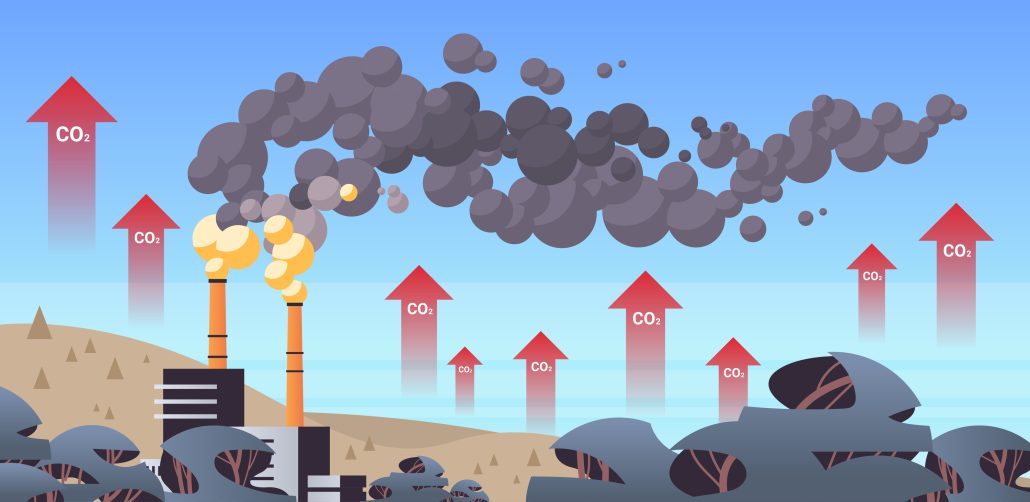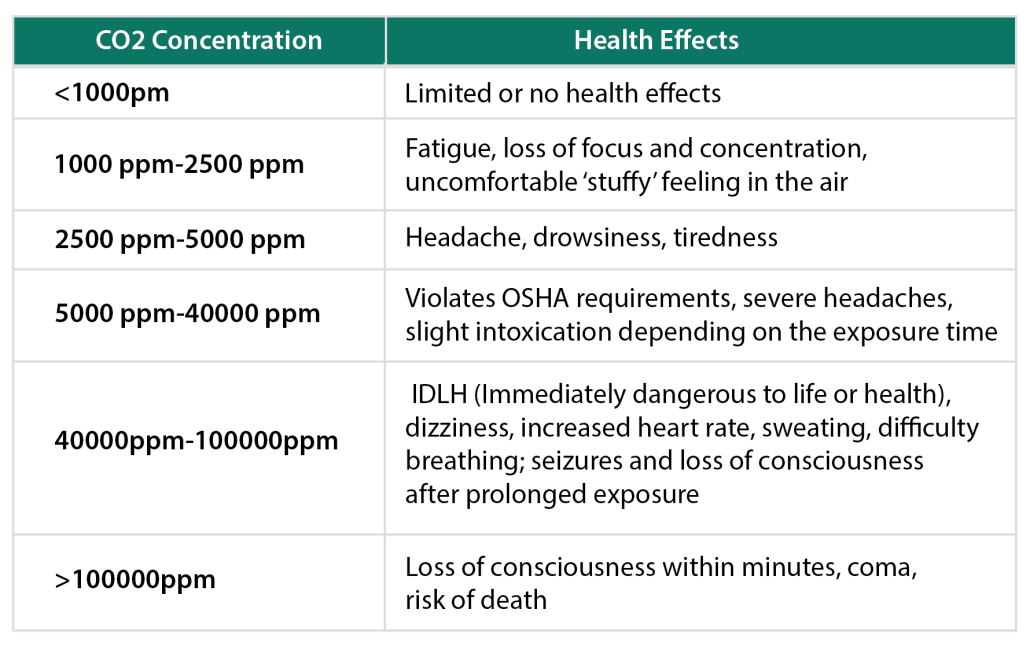Carbon dioxide, also called CO2, is a colorless, odorless gas. You may have also seen carbon dioxide in its solid form through dry ice. As CO2 heats up, it goes right from solid to gas, so you can’t see liquid carbon dioxide. Carbon dioxide (CO2) is a greenhouse gas. This means that it causes an effect like the glass in a greenhouse, trapping heat and warming up the inside. This effect is important: without the CO2 that naturally exists in the atmosphere, Earth might be too cold to support human life. However, the atmosphere is very sensitive to changing levels of CO2. Even though this gas makes up less than 0.1% of the atmosphere, it can have a huge effect on how much heat the planet’s surface retains. CO2 is not poisonous, and it’s even necessary for life on Earth. We used to think that CO2 could only harm people at unrealistic concentrations, but this answer has started to change.
Outdoor CO2 levels tend to average around 400 ppm, the highest it has been in thousands of years. The levels indoors can increase far beyond that, upwards of 1000 ppm or even 2000 ppm. When talking about indoor CO2 levels, the main culprit is actually your body. As you breathe, your body takes in oxygen and releases carbon dioxide. This released CO2 increases the concentration of CO2 in a closed room. Other sources of CO2 in a room include smoking, cooking using a gas or wood stove, and using fireplaces. Any open flame in your home is creating CO2. You don’t usually have to worry about carbon dioxide when outdoors because CO2 emissions get diluted by the surrounding air. However, if you are in an area with exposure to fire or combustion, whether natural or man-made, CO2 levels in that area may become dangerously high.
What Are the Effects of CO2 on the Human Body?
CO2 is not poisonous; as a gas, CO2 itself will not hurt you. This is an important fact to remember, as carbon dioxide is a vital part of the environment. The human breathing mechanism actual revolves around CO2, not oxygen. Without carbon dioxide, humans wouldn’t be able to breathe. It’s only when CO2 gets concentrated do you have to worry.
Carbon dioxide acts as a simple asphyxiant; in other words, as CO2 levels in a closed room rise, carbon dioxide replaces the oxygen your body needs. When your body can’t get oxygen, it slows down and does not function properly.
Because carbon dioxide is an asphyxiant, it mostly affects your brain. At moderate CO2 levels, around 1000 ppm, there are observable effects on your thinking. These same levels also reduce concentration and focus, as well as create discomfort from breathing stuffy air. Overall, moderate levels of CO2, which are very common in office meeting rooms, schools, and even your home, won’t let your body function optimally.
At higher levels, around 2500 ppm, there are significant reductions in cognitive functioning, especially for tasks that require higher-level thinking. People feel fatigued and report having more headaches. These conditions are less common but can still occur regularly in schools and poorly ventilated buildings. The chart below summarizes a study that shows how CO2 affects your brain functioning.
Why should we monitor Carbon Dioxide?
Monitoring CO2 is more relevant than ever before because occupancy rates are increasing. Buildings such as offices and schools are becoming more and more crowded as urban areas become increasingly populated, while space for creating new buildings is scarce. Because of this, meeting room participants and students can often feel drowsy after spending many hours indoors.
Making sure your ventilation system is working correctly is fundamental for the indoor air quality in your building. In fact, investigations found that 52% of the air quality problems indoors were related to inadequate ventilation.
If you are wondering whether your HVAC system is working efficiently, you can check for it by using your levels of CO2. Indeed, the amount of CO2 in a building is usually related to the amount of fresh air that is brought indoors. In general, the higher the concentration of CO2 in the building, the lower the amount of fresh air exchange.
Improving ventilation and managing the use of space more carefully can help to reduce indoor CO2 and its effects. To do so, you need the data to know when to make a change. Monitoring the CO2 levels with Greystone Carbon Dioxide sensors and transmitters for business in commercial buildings gives facility managers, tenants and more the ability to implement measures to keep the air healthy and safe. Visit our website for more information or contact one of our experts now!











